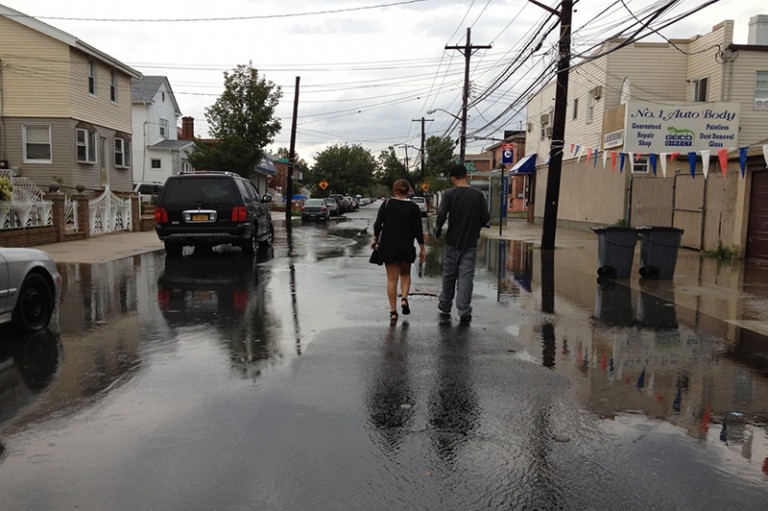PHOTO: Vulnerable communities such as Old Howard Beach can increase flood resiliency through infrastructure upgrades, according to the Department of City Planning. Courtesy of the Department of City Planning
By Michael V. Cusenza
The low-lying south Queens communities of Old Howard Beach, Hamilton Beach, and Broad Channel are vulnerable to tidal flooding today, and the conditions are only expected to worsen with projected sea level rise, according to the Department of City Planning, which presented current planning initiatives and priorities for Queens on Monday at a joint meeting of the Borough Board and Cabinet at Borough Hall.
However, particularly in Old Howard, DCP has indicated that it is possible to maintain a strong neighborhood “by supporting resilient retrofits and through investments in street-end infrastructure upgrades.”
Hamilton Beach and Broad Channel are far more challenging, DCP noted. A lack of infrastructure solutions presents obstacles to mitigating the impacts of sea level rise.
The unique built environment of Hamilton Beach and Broad Channel – narrow lots, and narrow, low-lying streets – pose challenges for resilient retrofitting and reconstruction. Existing R2, R3-1, and R3-2 Zoning Districts do not account for narrow lot frontage in the residential areas of these communities, DCP noted. Additionally, new, higher flood elevations present physical and economic challenges to the two commercial corridors: Cross Bay Boulevard and Coleman Square.
However, City Planning pointed out that there are opportunities to identify changes to zoning, both in residential areas and business corridors; to maintain neighborhood character, facilitate customer access to businesses, and enable resilient retrofits and building.
“The strategy for Hamilton Beach and Broad Channel,” according to DCP, “is to plan for adaptation over time by deploying a zoning treatment to denote high flood risk, and restrict future residential development to detached buildings, while making it easier for property owners to make investments in resiliency.”
The analysis of these communities is part of DCP’s Resilient Neighborhoods planning initiative, which works to identify neighborhood-specific strategies to support the vitality and resiliency of communities in the floodplain and prepare them for future storms.
According to the agency, each study considers the unique character of each community and the specific issues and opportunities, but is guided by a set of common goals: Reduce risks from natural hazards such as flooding and coastal storms; foster economically and socially vibrant communities that are able to adapt to changing conditions; and coordinate land use planning with rebuilding activities and infrastructure investment.
City Planning officials have said that the agency anticipates that the Resilient Neighborhoods study and report will:
- Build off outreach from other efforts, including the NYC Special Initiative for Rebuilding and Resiliency, and NY Rising programs.
- Provide clear, concrete information to residents on potential strategies for increasing resiliency that are implementable.
- Shape recommendations based on robust public outreach.
- Result in the implementation of regulatory changes through ULURP and make recommendations for infrastructure improvements.
As DCP has noted, Superstorm Sandy “was a stark reminder of the vulnerability of New York City’s coastal neighborhoods. Some communities suffered extensive damage, and numerous home and business owners continue to struggle to rebuild and recover. Others were largely unaffected by flooding in this storm, but remain at risk from future storms. Moreover, federal flood maps, which show a substantially larger floodplain, combined with increasing flood insurance premiums, present new economic challenges for many communities.”
michael@theforumnewsgroup.com

